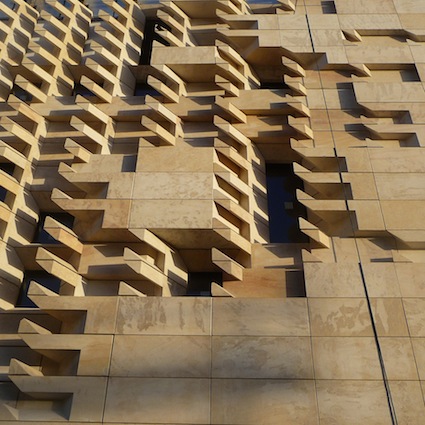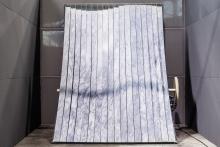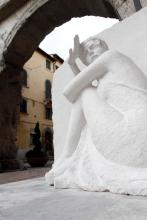
A major project using natural stone in Valletta, the capital of Malta, will be among the highlights at the upcoming
Being held from 24-27 September, the fair for operators in the stone industry, from machinery to instrumental products, from marble blocks to more complex processing, will see Hall 1 given over to an exhibition illustrating the history of the Valletta City Gate project.
In 2008, Studio Renzo Piano Building Workshop (RPBW) began work on the project, which redesigned access to the historic centre of Valletta. The complex of buildings comprises the new Malta Parliament, the Opera House rebuilt from ruins and the new Valletta City Gate.
The project is located in an important area of Valletta, close to its famous 15th XV century walls, and while these are a World Heritage Site, there was a great need for an architectural and urban re-organisation project.
The Studio RPBW project managed to establish dialogue involving the old and new buildings and the gateway to the city, and the choice of local stone for walls and historic buildings played a fundamental role. In the new buildings, stone helped ensure integration with the overall context while emphasising them through innovative applications.
“The cladding of the facades of the New Parliament is not intended merely as an external finishing for the building: stone has been entrusted with new functions (energy and lighting control) that go beyond its general protective purposes,” says the organisers of Marmomacc.
“The decorations in local stone also play an important role by modulating the light penetrating inside the building and thereby assisting air conditioning. This explains the brises-soleil elements designed in accordance with the angle of the sun's rays, yet integrated into the fabric of the building.”
This project and its high technological content was made possible through the efforts of CFF Filiberti, which worked on the engineering of the facade and the production of individual stone elements.
“This aspect in turn became a kind of project within a project, ensuring the attainment of the high technological standards envisaged, as well as the implementation of the design idea by the RPBW Studio whereby the volume of the Parliament is shaped rather like a rock eroded by the wind.
“This initiative by Marmomacc seeks to enhance and promote the technical and design aspects of this work by highlighting the innovative use of stone and demonstrating the new technological qualities that can be obtained with this ancient material.”
Hall 1 at the Verona site will host an exhibition illustrating the history of the project with photos and drawings detailing the facade design process, following the route taken by natural stone from the quarry to the installation site.
The exhibition will be flanked by stone elements used in the Malta project in 1:1 scale to outline the engineering process involved in the details and stone processing.
This fundamental experience in the application of stone materials in a major work of architecture will also be highlighted during Marmomacc by a Round Table with input and testimony by people who worked on the design and development of Valletta City Gate.
“The intention is to emphasise once again how a project can be a driving force behind innovation and how success was the outcome of dialogue between clients, designers and companies,” say the organisers.
Speakers at the Round Table will include Studio RPBW designers and consultants; the CFF Filiberti company, which produced and installed the stone elements for the external and internal facades, and representatives of the Malta Government which commissioned the work.







